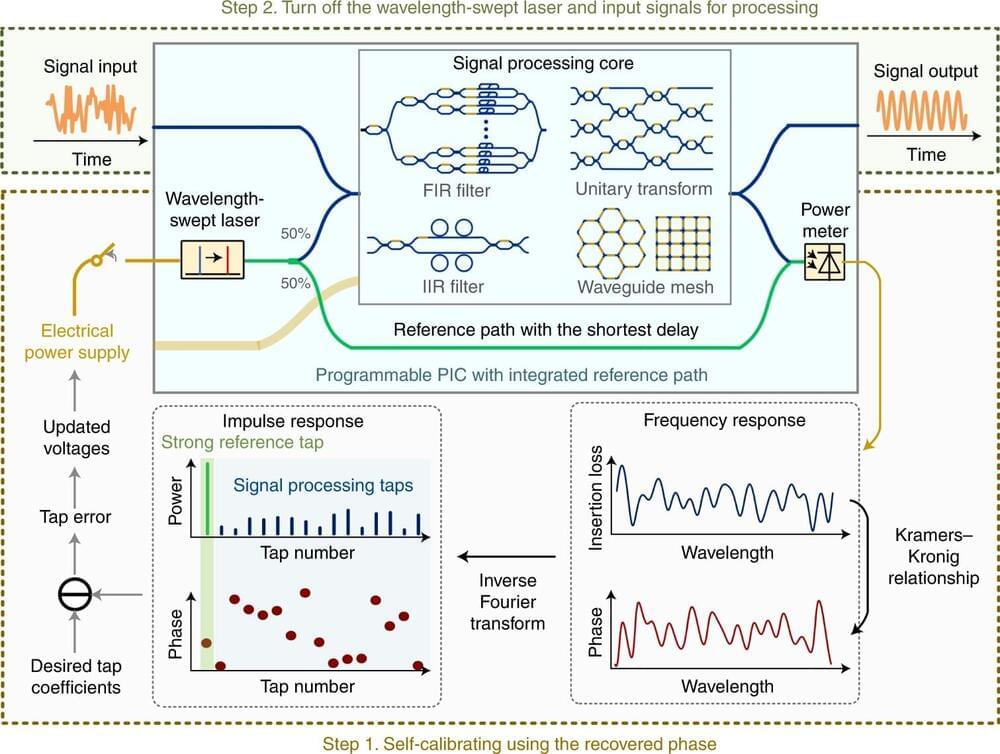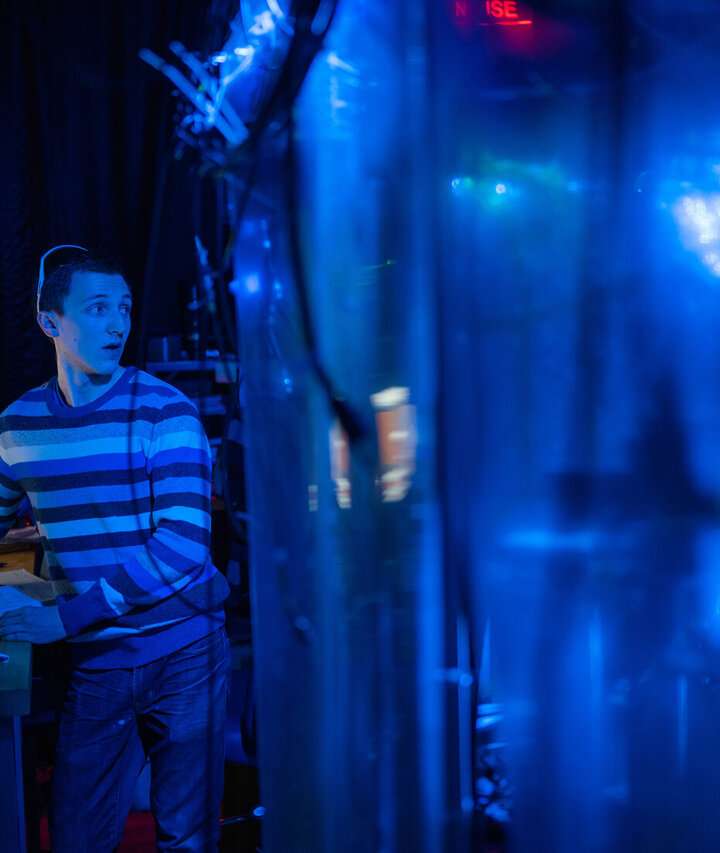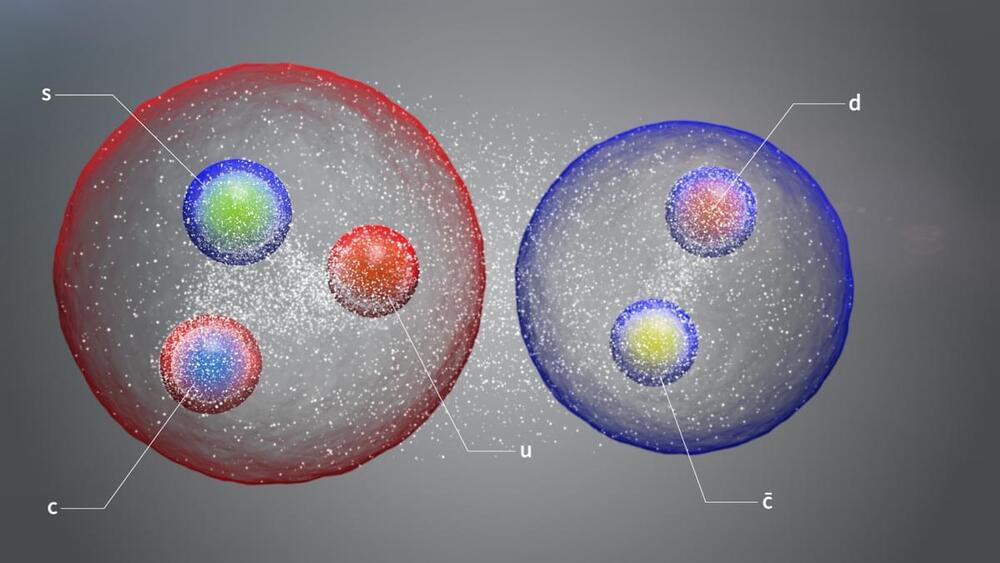Australopithecus fossils in South Africa are one million years older than initially thought. This could rewrite the story of human evolution.
Research led by Monash and RMIT Universities in Melbourne has found a way to create an advanced photonic integrated circuit that builds bridges between data superhighways, revolutionizing the connectivity of current optical chips and replacing bulky 3D-optics with a wafer thin slice of silicon.
View insights.
A quantum simulator at Rice University is giving physicists a clear look at spin-charge separation, the quantum world’s version of the magician’s illusion of sawing a person in half.
The government doesn’t need to watch you to know exactly who you are. The market for data about our most intimate selves is booming.
‘The more analyses we perform, the more kinds of exotic hadrons we find’
In the last two years, researchers have discovered a tetraquark made up of two charm quarks and two charm antiquarks, and two “open-charm” tetraquarks consisting of a charm antiquark, an up quark, a down quark and a strange antiquark.
“The more analyses we perform, the more kinds of exotic hadrons we find. We’re witnessing a period of discovery similar to the 1950s, when a ‘particle zoo’ of hadrons started being discovered and ultimately led to the quark model of conventional hadrons in the 1960s. We’re creating ‘particle zoo 2.0,” LHCb physics coordinator Niels Tuning said in a statement.
Last year, researchers also found the first-ever instance of a “double open-charm” tetraquark with two charm quarks and an up and a down antiquark.
A network in which data transmission is perfectly secure against hacking? If physicists have their way, this will become reality one day with the help of the quantum mechanical phenomenon known as entanglement. For entangled particles, the rule is: If you measure the state of one of the particles, then you automatically know the state of the other. It makes no difference how far away the entangled particles are from each other. This is an ideal state of affairs for transmitting information over long distances in a way that renders eavesdropping impossible.
A team led by physicists Prof. Harald Weinfurter from LMU and Prof. Christoph Becher from Saarland University have now coupled two atomic quantum memories over a 33-kilometer-long fiber optic connection. This is the longest distance so far that anyone has ever managed entanglement via a telecom fiber.
The quantum mechanical entanglement is mediated via photons emitted by the two quantum memories. A decisive step was the researchers’ shifting of the wavelength of the emitted light particles to a value that is used for conventional telecommunications. “By doing this, we were able to significantly reduce the loss of photons and create entangled quantum memories even over long distances of fiber optic cable,” says Weinfurter.
Time loops may not be forbidden
Posted in physics
Physicists find that causal loops, where two events separated in time influence each other in paradoxical ways, are allowed in many theoretical universes, some of which share features with our own.
Molecular machines that kill infectious bacteria have been taught to see their mission in a new light.
New nanoscale drills have been developed that are effective at killing bacteria. These novel molecular machines are activated by visible light and can punch holes through the cell membranes of bacteria in just two minutes. As bacteria have no natural defenses against this mechanism, it could be a useful strategy to treat antibiotic-resistant bacteria.
The latest iteration of nanoscale drills developed at Rice University are activated by visible light rather than ultraviolet (UV), as in earlier versions. These have also proven effective at killing bacteria through tests on real infections.
Russian scientists have synthesized a new ultra-hard material containing scandium and carbon. It consists of polymerized fullerene molecules with scandium and carbon atoms inside. The work paves the way for future studies of fullerene-based ultra-hard materials, making them a potential candidate for use in photovoltaic and optical devices, elements of nanoelectronics and optoelectronics, biomedical engineering as high-performance contrast agents, etc. The research study was published in the journal Carbon.
The discovery of new, all-carbon molecules known as fullerenes almost forty years ago was a revolutionary breakthrough that paved the way for fullerene nanotechnology. Fullerenes have a spherical shape made of pentagons and hexagons that resembles a soccer ball, and a cavity within the carbon frame of fullerene molecules can accommodate a variety of atoms.
An international team consisting of Russian and German scientists has made a breakthrough in the creation of seemingly impossible materials. They have managed to create the world‘s first quantum metamaterial which can be used as a control element in superconducting electrical circuits.
Metamaterials.
Metamaterials are engineered materials that have properties not usually found in nature.









